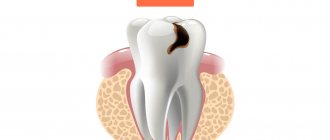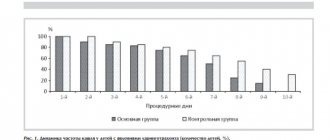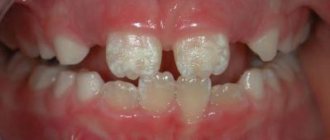Coughing up blood: causes of illness in adults
In some cases, when the cough is strong, dry and hysterical, a small amount of scarlet blood in the sputum may be the result of damage to small superficial vessels in the bronchi, pharynx or trachea. This phenomenon is not dangerous if it is not accompanied by other alarming signs. However, if the cough does not subside, the symptoms increase, the volume of blood is significant, or the streaks do not disappear, this may be a sign of serious problems and illnessesSource: EarwoodJS, ThompsonTD. Hemoptysis: evaluation and management // Am Fam Physician. 2015 Feb 15;91(4):243-9..
The most common diseases
The causes of blood impurities lie in a number of dangerous diseases. Most often, this symptom appears with lung cancer. In this case, patients note a bright scarlet discharge, which is accompanied by a large outflow of sputum.
We recommend reading: Nasal drops for children: Vasoconstrictor, antiviral and proto-head
In addition, severe chest pain, shortness of breath, asthma attacks, and breathing problems are noted. Patients often complain of increased sweat gland activity, especially at night.
A malignant tumor occurs without pronounced symptoms and at first the patient may not feel a deterioration in health.
Unfortunately, there is no universal cure for cancer . Therefore, if there is bleeding or even a taste of blood in the mouth, the patient should immediately contact a medical center. Early treatment will stop the progression of the disease and facilitate the course of treatment.
There are many causes of metallic taste besides cancer. Below we list the main inflammations that are accompanied by this symptom.
Lobar pneumonia
A lung disease that is accompanied by acute inflammation in the lung tissue is acute lobar pneumonia. Most often, the disease affects two sides of the tissue at once , which causes pronounced symptoms of intoxication. The disease is characterized by secondary changes in internal organs, which can lead to dangerous consequences.
In the absence of competent and comprehensive treatment, the disease becomes fatal, as it affects the entire respiratory system and the functioning of the cardiovascular area. This process invariably leads to brain hypoxia.
Bilateral inflammation causes severe coughing, which disrupts the functioning of the superior laryngeal and vagus nerves. This process causes bloody discharge due to which the patient feels severe discomfort.
Lobar pneumonia is accompanied by acute symptoms:
- nonproductive cough;
- rust-colored sputum;
- bloody discharge;
- metallic taste in the mouth;
- dyspnea;
- increased breathing;
- pain in the chest.
Tuberculosis
A common cause of bloody discharge and an unpleasant taste in the mouth is tuberculosis. Inflammation is transmitted by airborne droplets, so anyone can get sick . People at risk include people with weak immune systems, poor nutrition and poor living conditions.
In addition, young children and the elderly are susceptible to tuberculosis . HIV-infected people often suffer from inflammation.
Extrapulmonary tuberculosis can cause disruption of the brain and kidneys. In addition, there is a risk of pathology in the pleural cavity.
As a rule, tuberculosis is accompanied by an acute cough, which can torment the patient for more than two weeks. At this time, there is pain in the sternum, discharge with bloody streaks, and the outflow of a large amount of sputum. In addition, there is severe weight loss, elevated body temperature, weakness, lethargy, and sweating.
Lack of treatment for tuberculosis can lead to dangerous consequences, including the death of the patient. With proper diagnosis and timely treatment, you can get rid of inflammation in one month, but a recurrence of the disease cannot be ruled out after a few years. For this reason, tuberculosis patients must monitor their diet, lifestyle, and immune system.
Bronchitis
The inflammatory process that forms in the mucous region of the bronchial tree or bronchi is another reason for the sensation of blood in the mouth. Bronchitis is not considered a dangerous disease, but requires a certain medical approach.
During the development of the disease, patients note the formation of the following symptoms:
- dyspnea;
- severe dry cough;
- temperature increase;
- deterioration of health;
- stabbing or paroxysmal pain in the chest area;
- pain in the head;
- loss of appetite and sleep disturbance;
- respiratory failure;
- hypoxemia;
- change in color of mucous membranes;
- wheezing in the larynx.
Bronchitis can be accompanied by purulent discharge and a severe cough, leading the patient to a debilitating state. The symptoms of inflammation should be eliminated as quickly as possible, otherwise there is a risk of developing a chronic form of the disease.
Lung abscess
Another nonspecific inflammation that causes severe symptoms, including the sensation of blood in the mouth, is a lung abscess. The disease occurs against the background of the penetration of pathogenic flora into the bronchogenic tract of the lung.
The main causative agents of the disease are Staphylococcus aureus, gram-negative aerobic bacteria and non-spore-forming anaerobic microorganisms.
The likelihood of infection of the lung tissue increases if the patient suffers from periodontal disease, tonsillitis or gingivitis.
Symptoms of an abscess are not always expressed sharply and vividly. Sometimes pain does not appear immediately, but several days after the onset of the disease.
As inflammation progresses, pain in the chest is noted. The pain may get worse when you inhale or exhale.
Why a patient coughs when inhaling can be found here.
In addition, patients complain of severe fever, chills, dry and prolonged cough, a metallic taste in the mouth, and high body temperature.
For reference! The period of development of a lung abscess is uncontrolled. It can last up to ten days.
Bronchiectasis
A disease that can be congenital or acquired. This pathology is characterized by irreversible expansion of the bronchi, as a result of which their functional purpose is disrupted. Usually the process develops in the bronchi of the smallest diameter, accompanied by chronic inflammation and the formation of purulent foci (bronchiectasis).
Patients complain of a constant cough with a large amount of secretion with a putrid odor, especially after a night's sleep. As bronchiectasis fills with new portions of sputum, the cough intensifies and the process repeats. Prolonged inflammation leads to thinning of the mucous membrane lining the respiratory tract. With constant coughing efforts, traumatization and rupture of small vessels occurs. This causes hemoptysis in bronchiectasis.
In advanced cases of the disease, coughing may damage large vessels. This often leads to massive pulmonary hemorrhage.
Pathologies of the heart and blood vessels
With such anomalies, blood circulation in the body is disrupted. As a result, there is stagnation of blood in the lungs. During a cough, blood cells that have an elongated oblong shape are released. With congestion in the lungs, a person develops weakness and severe shortness of breath. These symptoms are especially pronounced during physical activity.
Pneumonia
This disease is characterized by the occurrence and development of the inflammatory process directly in the lung parenchyma.
It manifests itself as a pronounced intoxication syndrome, a constant productive cough, pain in the chest on the affected side, and scanty secretion of blood and sputum. The severity of clinical symptoms depends on the extent of the process (bilateral, segmental, polysegmental or lobar pneumonia). In severe cases, the development and progression of respiratory failure is possible, which is a direct indication for hospitalization in the intensive care unit for artificial ventilation.
Digestive system diseases
If the functions of the stomach and adjacent organs are impaired, blood discharge can be observed with or without coughing.
At the initial stage of development of such pathologies, a person does not experience bleeding.
In this case, the patient feels a metallic taste and the smell of blood in the mouth.
B12 deficiency anemia or folate deficiency anemia
These 2 diseases are less common than iron deficiency anemia. And although the mechanism of their development is different, it is impossible to distinguish between these 2 diseases based on symptoms alone.
They appear either due to insufficient intake of vitamins B12 or B9 from food (vegetables, liver and animal meat, yeast), when the absorption of vitamins in the intestines is impaired (due to diseases of the stomach and intestines), when substances that are antagonists of these substances enter the body vitamins (contraceptives, barbiturates, anticonvulsants based on valproic acid).
Both diseases manifest themselves as pale skin with a yellowish tint, weakness, dizziness, rapid pulse and low blood pressure. With severe B12-deficiency anemia, sensitivity disorders appear, previously coordinated muscle work becomes discoordinated when performing any actions, insomnia, depression, and even hallucinations and psychoses develop. B12-deficiency anemia can be suspected by the appearance of the tongue alone: it is large, pink-red (sometimes called crimson), as if opened with varnish, and a burning sensation is often felt in it. There are visible marks in the corners of the mouth.
We recommend reading: Rubbing with vodka at a temperature: algorithm and possible contraindications
Lungs' cancer
A disease that is practically untreatable.
In the early stages it does not manifest itself in any way and is most often detected by chance, during routine examinations. The first symptoms of cancer appear when the disease has already advanced. Patients complain of weakness, loss of appetite and weight loss, low-grade fever. A characteristic symptom is a cough with bloody streaks, especially in the morning. If you suspect a malignant process in the lungs, you should immediately contact an oncologist!
Other pathologies
There is a whole list of pathologies and emergency situations in which blood can be released. These include the following anomalies:
- Pulmonary vasculitis;
- Hemorrhagic purpura;
- Ingestion of foreign objects into the lungs;
- Rib injuries.
In some situations there is a risk of influence of iatrogenic factors. The occurrence of coughing with blood may be a consequence of otolaryngological intervention - removal of tonsils or adenoids. In such cases, the taste of blood disappears on its own after some time.
Gastritis with reduced acid-forming function, peptic ulcer
This disease is characterized by the following combination of symptoms:
- pain in the abdomen on the left or center, usually dull, after eating;
- bloating;
- the tongue is covered with a white coating;
- belching initially with air, then it may be a “rotten egg”;
- nausea, sometimes vomiting;
- Most often there is constipation, but there may also be diarrhea.
Gastric ulcers and duodenal ulcers will manifest themselves in a similar way (it is distinguished by the fact that pain more often occurs on an empty stomach and at night, and not after eating).
Liver diseases
Pathologies such as malignant tumors, liver cysts, and less commonly, hepatitis, can cause a metallic taste in the mouth. In the case of tumors, this symptom may be the only one for a long time. When the tumor begins to grow progressively, the following are noted:
- drowsiness or agitation;
- darkening of urine, lightening of stool;
- pain or heaviness in the right side of the abdomen;
- bleeding gums;
- in women - heavy menstruation;
- blood does not clot well after injury;
- The person's limbs and face become thinner, and free fluid appears in the abdomen, making it appear as if there is excess weight.
Stomatitis
This is an inflammation of the oral mucosa. The disease can be a manifestation of some systemic diseases (for example, systemic scleroderma or pemphigus), but often occurs due to injuries when pathogenic microorganisms settle on the damaged mucous membrane. Candidal stomatitis often occurs after treatment with antibiotics, and if a person has not used either systemic or local antibacterial drugs in the next month, an immunodeficiency state (primarily HIV infection) must be excluded.
The disease exists in several forms with different manifestations:
- The catarrhal form is manifested by redness and swelling of the oral mucosa. The person feels as if the gums or cheeks are swollen, but with the mouth closed the deformation of the face is not visible. When examining your mouth in the mirror, you can see red and bleeding mucous membranes; these places of redness are painful to touch, and with stronger mechanical pressure they begin to bleed. Eating and drinking becomes painful; you can only eat pH-neutral (not sour, not spicy, not alkaline, not salty) food at room temperature. The same goes for drinks.
- Ulcerative form . If the previous form involves inflammation of only the superficial membrane lining the oral cavity, then with ulcerative stomatitis it becomes inflamed to its full depth. At first, the symptoms of this form do not differ from catarrhal stomatitis, but after 3-5 days the condition worsens: the body temperature rises, eating and drinking becomes very painful, and the submandibular lymph nodes become enlarged.
- Aphthous form . After 1-2 days of general malaise and fever, changes suddenly appear in the oral mucosa. They look like round lesions, in the middle of which there is a white, gray or yellow coating, and around there is a border of redness. Aphthae are painful to the touch, and as they heal, scars form in their place.
- Herpetic stomatitis . It begins with increased salivation, weakness, and bad breath. Against this background, after a few days, changes occur in the mucous membrane of the oral cavity: groups of bubbles appear there, extremely painful and without touching.
- Ulcerative-necrotizing stomatitis. It occurs when both fusobacteria and spirochetes come into contact with the mucosa. It is more often observed in men, especially those who abuse alcohol, have undergone surgery, and are exposed to constant stress. This association of bacteria causes the following symptoms:
- the first symptom is general malaise;
- then the gums begin to hurt, turn red and bleed;
- Over time, the condition worsens: the person becomes lethargic, appetite worsens, and insomnia appears;
- Sores appear on the gums, palate, and area under the tongue, on which there is first a yellow, then a gray-green coating. Ulcers are painful. In severe cases, not only the entire thickness of individual sections of the mucous membrane becomes inflamed, but the bone is also affected.
Inflammatory throat lesion
A metallic taste can be caused by simple damage to the throat and subsequent inflammatory processes in it. It is necessary to check the oral cavity for cracks and abrasions, and, if possible, treat them yourself.
Biliary tract diseases
Biliary dyskinesia and exacerbation of chronic cholecystitis will also be manifested by the appearance of a metallic taste. They are also characterized by the appearance of a dull pain in the right hypochondrium, which can radiate to the right scapula and right supraclavicular region. Diseases can also manifest themselves as vomiting, especially on an empty stomach, loose stools or constipation. With exacerbation of chronic cholecystitis, the temperature may rise to low numbers (37.5°C maximum).
A metallic taste can develop with cholangitis (inflammation of the intrahepatic bile ducts) and with acute cholecystitis (acute inflammation of the gallbladder), but against the background of severe pain in the right hypochondrium, nausea, vomiting, and high fever, it is practically unnoticeable.
Periodontitis
This is the name for the inflammation of those tissues that hold the tooth in its bone “receptacle”. The disease manifests itself:
- bleeding gums;
- saliva viscosity;
- painless loose teeth;
- constantly forming plaque on the teeth.
Bleeding causes a metallic taste.
Not related to diseases
Sometimes the metallic taste is due to the characteristics of the olfactory system. For example, tourists staying in another country and trying local dishes may notice that their taste buds begin to work differently.
If there is a cough, but short-term, without fever, deterioration of health and pain in the larynx or chest, then we are talking about irritation of the body. A metallic taste appears after a medical examination. It will be after swallowing the probe.
What diseases are typical for hemoptysis?
The appearance of sputum with blood when coughing is called hemoptysis, it is possible with various diseases:
- COPD with severe bronchitis or emphysema;
- pneumonia (acute or exacerbation of chronic);
- tuberculous lesions of the lungs and bronchi;
- cancerous tumor in the lungs;
- injuries to the chest and lung tissue.
In addition, impurities of blood in coughed up mucus are possible with lesions of the nasopharynx (including nosebleeds) and the upper parts of the digestive tract.
If cough or hemoptysis appears, even without fever, it is important to consult a doctor. This is especially dangerous if symptoms such as fever, shortness of breath, severe weakness, pain in the body or limbs appear against the background of coughing up blood. You need to call an ambulance immediately. Such an attack may be a symptom of a serious illness. It is important to immediately determine the correct diagnosis and begin treatment. Source: K. Krenev, Ya Kabysh, O Yudin. Difficult patient or patient with hemoptysis // Sciences of Europe, 2022, No. 48, pp. 17-22.
What to do if you taste blood in your mouth?
First, you should contact your dentist. The doctor will confirm or deny dental diseases, prescribe effective gum treatment or refer you to another specialist.
If the taste of blood in the mouth appears for a short time, you can eliminate it using traditional methods of treatment. For example, rinse your mouth with water and lemon juice or a water-salt solution. You can also get rid of the unpleasant taste using a chamomile solution. To prepare it, you need to pour 5 g of dried flowers into 500 ml of water and cook for 7-10 minutes in an enamel bowl. The product must be infused for an hour.
A decoction of oak bark will also help get rid of the taste of blood in your mouth. To prepare it, 10 grams of raw material should be steamed with boiling water and left for about an hour.
An effective means of treating gum inflammation and eliminating such unpleasant symptoms as the taste of blood in the mouth is ASEPTA Active mouth rinse. This combined action remedy is used for infectious and inflammatory diseases of the oral cavity, and also quickly relieves bleeding and inflammation of the gums. The rinse has an antimicrobial, anti-inflammatory and analgesic effect, does not contain alcohol, fluorine and dyes, so it is perfect for treating even those with the most sensitive tissues.
Diagnostic methods
Since coughing up blood can be a sign of a serious illness, it is important to make a diagnosis as quickly and accurately as possible. A complex of laboratory tests and necessarily radiography or CT, ultrasound or MRI are required to determine the source of bleeding, especially if it is severe enough. Sometimes blood may not come from the respiratory system, but from soft tissues, the pleural cavity or the esophagus.
A detailed medical history is important - all health problems that preceded the appearance of the cough (smoking, injuries, colds, abdominal pain, etc.). They may indicate possible causes. If the source of bleeding is in the bronchi, an additional bronchoscopy may be prescribed. All diagnostic procedures are usually performed during hospitalization in a clinic.
Internal pathologies
The most common diseases of internal organs that lead to the taste of blood in the mouth include:
- bronchitis;
- pneumonia (pneumonia);
- lung abscess;
- lungs' cancer;
- cystic fibrosis;
- tuberculosis;
- dysfunction of the heart;
- disruption of the gastrointestinal tract (GIT);
- diseases of the ENT organs.
Neurological diseases can also cause the taste of blood in the mouth. A signal travels through the nerve fibers of the brain to the taste buds; if its transmission is disrupted, an unusual taste may appear in the mouth.
However, neurological problems accompanied by a blood taste usually have other unpleasant manifestations. For example, they may be accompanied by headaches, hearing problems, hand tremors, trembling eyelids, and lumbago in certain areas of the face.
In very rare cases, the taste of blood in the mouth is caused by heavy metal poisoning. A similar problem often awaits workers in chemical laboratories and metal processing plants. Intoxication of the body is accompanied by other unpleasant symptoms - attacks of dry cough, nausea, aching limbs, swelling of the gums, and lack of appetite. Dysbacteriosis is also rarely the cause.
Treatment
It is important to remember that hemoptysis is only a symptom. It is important to treat the underlying condition and make efforts to stop the bleeding. If these are inflammatory processes (pneumonia, bronchitis), a course of antibiotics and anti-inflammatory therapy in combination with drugs to regulate blood clotting are indicated. Regular cleansing of the bronchi from bloody sputum (sanitation) is also indicated.
If this is a tuberculosis lesion, anti-tuberculosis therapy is necessary, including surgical interventions on the affected lesions (cavities). For injuries and abscesses, the solution to problems is surgery; for cancerous lesions, tactics are selected individually, depending on the stage. Source: Ittrich H, Bockhorn M, Klose H, Simon M. The Diagnosis and Treatment of Hemoptysis // The Diagnosis and Treatment of Hemoptysis.Dtsch Arztebl Int. 2017 Jun 5;114(21):371-381. doi: 10.3238/arztebl.2017.0371..
About cough
A cough is primarily a reflex process that occurs when the mucous membrane of the throat is damaged. It does not occur as an independent symptom, therefore in each case it requires a certain medical intervention.
The cause of inflammation may lie in a common flu. Colds occur spontaneously and are accompanied by itching and irritation, pain in the larynx, chills, lethargy and drowsiness. At the same time, patients note changes in body temperature, fever, and muscle pain.
Cough is a faithful companion to a viral or infectious infection of the respiratory tract. You can get rid of the disease with the help of antiviral and anti-inflammatory drugs.
A cold cough can be cured with anti-inflammatory medications. You can find out which tablets are prescribed during this period here.
If the cough appears after a cold or flu, most likely bacterial growth . You can get rid of this etymology only with the help of powerful broad-spectrum drugs.
Important! Antibiotics are not prescribed on the first day of inflammation. The doctor must verify the bacterial nature of the inflammation, and this requires about three days.
In addition to bacterial and viral nature, cough can be allergic. It occurs as a protective reaction upon contact with allergens. The most common causes include interaction with pets or contact with dust and dirt. Other types of allergens include dust, flowers, some food products, cosmetics, and perfumes.
You can find out how to cure an allergic cough here.
Allergic inflammation should be treated as quickly as possible. If the irritant is not eliminated soon, there is a risk of developing cough asthma.
Prevention
The main methods of preventing hemoptysis are preventing the pathologies that cause it. Quitting smoking, maintaining a healthy lifestyle, regular exercise, and timely treatment of colds are important.
Sources:
- Earwood JS, Thompson TD. Hemoptysis: evaluation and management // Am Fam Physician. 2015 Feb 15;91(4):243-9.
- Ittrich H, Bockhorn M, Klose H, Simon M. The Diagnosis and Treatment of Hemoptysis // The Diagnosis and Treatment of Hemoptysis.Dtsch Arztebl Int. 2022 Jun 5;114(21):371-381. doi: 10.3238/arztebl.2017.0371.
- K. Krenev, I am Kabysh, O Yudin. Difficult patient or patient with hemoptysis // Sciences of Europe, 2022, No. 48, pp. 17-22










